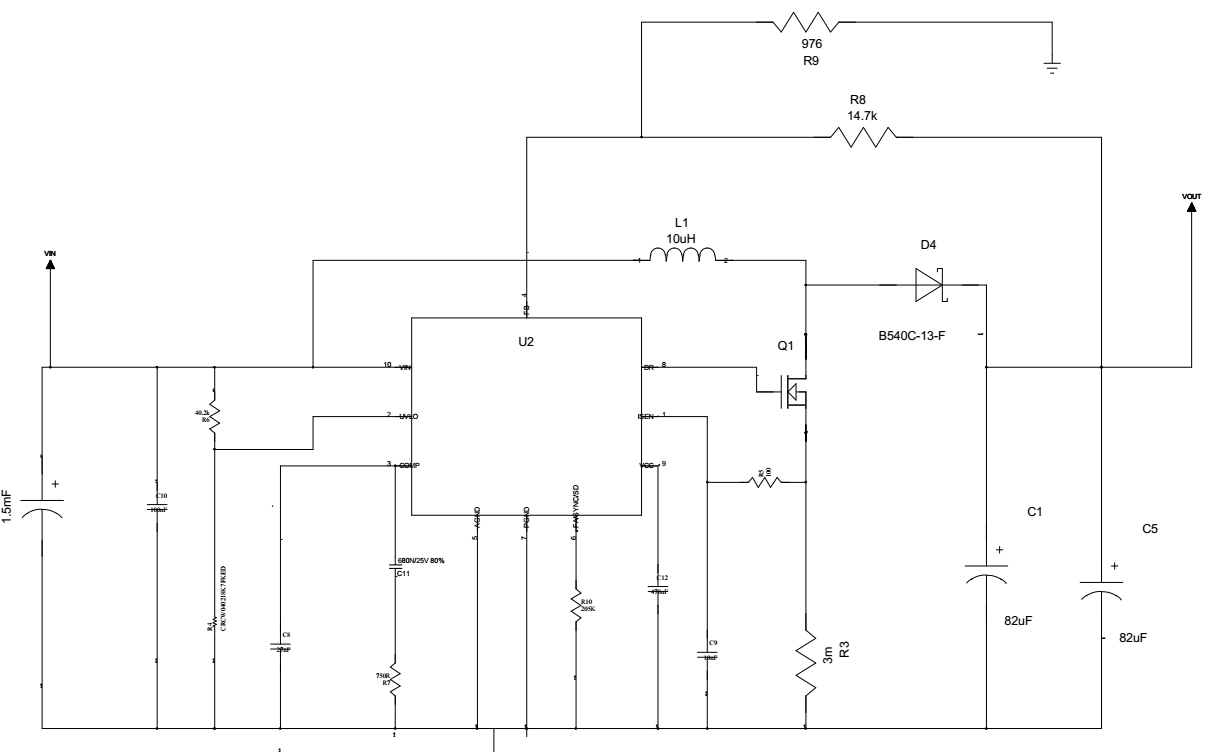Hello,
We have a design for boost converter with input from 9-21[V], Output of 21[V] and load of about 1.5[A].
When we connect Vin directly to supply, the boost converter works fine with all the different duty cycles at different voltages.
However we need the design to work also from a POE Ethernet cable of about 100[m], which have about 12[Ohm] resistance.
This is a problem because even when we input 36[V], the voltage drop over the wire is about 18[V] which means the LM3481 will see 18[V] input which should be enough - but still it doesn't work, It tries to draw more current and drops the input voltage.
We added more capacitors at the Vin input but it doesn't solve the problem. I suspect that the maybe the current sense / feedback doesn't know how to compensate for the voltage drop from the cable?
Attached below is the schematic for the converter which was generated using the Webench tool.
Help will be much appreciated.
Thanks,
Ofir


